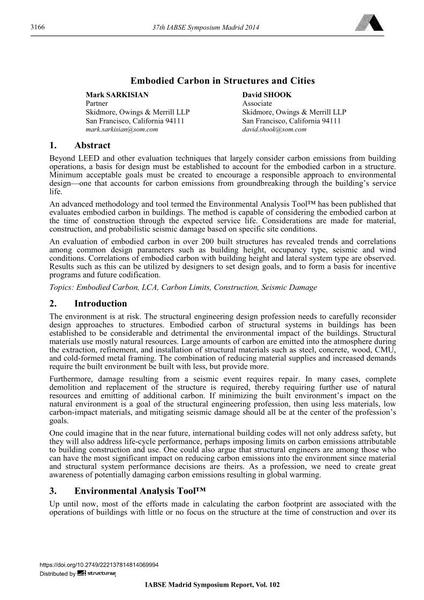Embodied Carbon in Structures and Cities

|
|
|||||||||||
Bibliografische Angaben
| Autor(en): |
Mark Sarkisian
David Shook |
||||
|---|---|---|---|---|---|
| Medium: | Tagungsbeitrag | ||||
| Sprache(n): | Englisch | ||||
| Tagung: | IABSE Symposium: Engineering for Progress, Nature and People, Madrid, Spain, 3-5 September 2014 | ||||
| Veröffentlicht in: | IABSE Symposium Madrid 2014 | ||||
|
|||||
| Seite(n): | 3166-3173 | ||||
| Anzahl der Seiten (im PDF): | 8 | ||||
| Jahr: | 2014 | ||||
| DOI: | 10.2749/222137814814069994 | ||||
| Abstrakt: |
Beyond LEED and other evaluation techniques that largely consider carbon emissions from building operations, a basis for design must be established to account for the embodied carbon in a structure. Minimum acceptable goals must be created to encourage a responsible approach to environmental design—one that accounts for carbon emissions from groundbreaking through the building’s service life. An advanced methodology and tool termed the Environmental Analysis Tool™ has been published that evaluates embodied carbon in buildings. The method is capable of considering the embodied carbon at the time of construction through the expected service life. Considerations are made for material, construction, and probabilistic seismic damage based on specific site conditions. An evaluation of embodied carbon in over 200 built structures has revealed trends and correlations among common design parameters such as building height, occupancy type, seismic and wind conditions. Correlations of embodied carbon with building height and lateral system type are observed. Results such as this can be utilized by designers to set design goals, and to form a basis for incentive programs and future codification. |
||||
